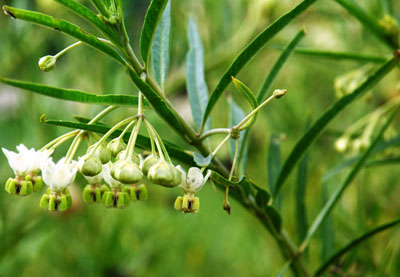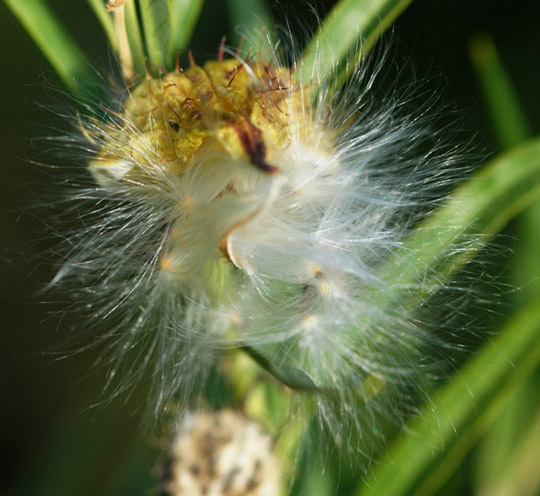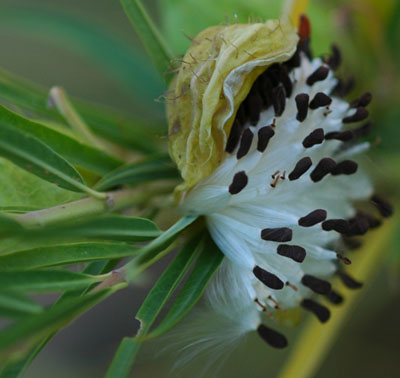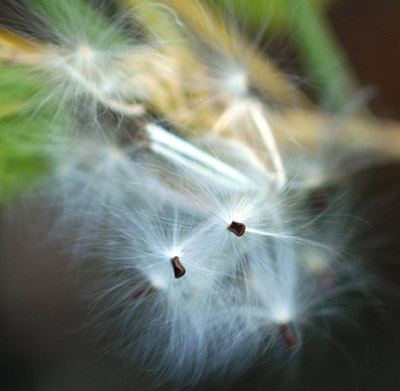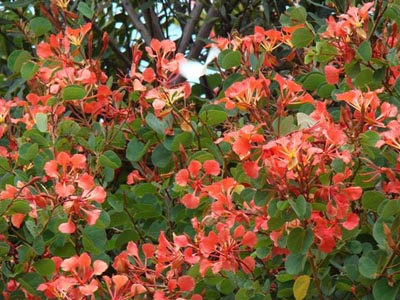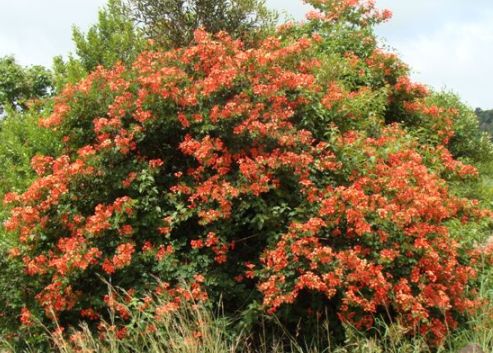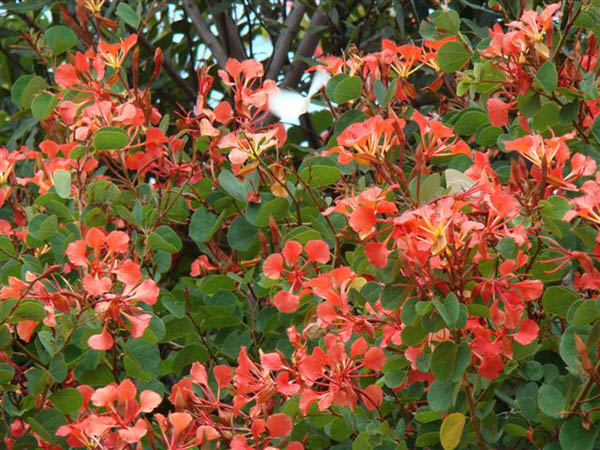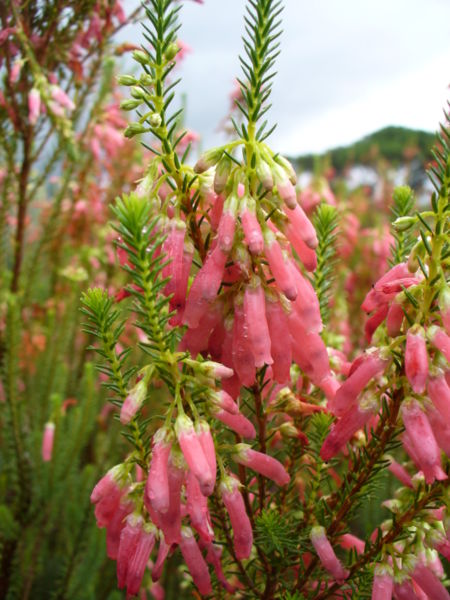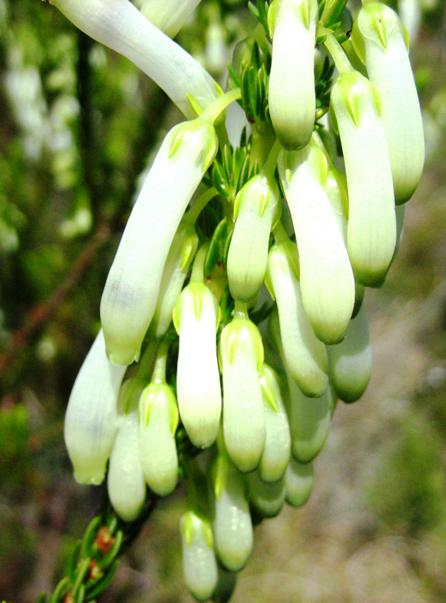|
Botanical name |
Adenium multflorum |
|
Other names |
Impala lily, impalalelie (Afrikaans); adenium obesum |
|
Family |
Apocynaceae |
|
Dimensions |
A thick-stemmed, sometimes multistemmed succulent shrub, deciduous (or semi-deciduous in warmer areas); around 1,5 m, occasionally double that height |
|
Description of stem |
A squat, succulent stem, tapering upwards with a smooth light grey surface |
|
Description of leaves |
Simple, alternate or spiralling, towards the end of the otherwise bare branches; fleshy, obovate, dark green, pale below, midrib prominent on the lower surface; apex rounded, margin entire |
|
Description of flowers |
Abundant white or pink flowers with bright pink borders at the outer edges of the petals, floral parts in fives, bisexual; distinctive vertical maroon stripes occur at the throat of the trumpet; some colour variations occur; a very striking sighting in its natural surroundings in winter when the abundance of flowers adorn the leafless stems |
|
Desciption of seed/fruit |
Paired, cylindrical, over 20 cm long, hairy, turning brown when mature; splits open to release more than 50 long thin seeds with hairy tufts at the ends |
|
Description of roots |
Thick underground stems |
|
Variation |
Several subspecies occur throughout Africa and Arabia; variations multiplied in cultivation; some writers separate A. multiflorum and A. obesum |
|
Propagation and cultivation |
Grown from seed or cuttings in spring, best in semi-arid conditions, high temperatures, full sun, well-drained sandy soil, watered in similar way as cacti; seedlings have been reported to flower within a year |
|
Tolerances |
Can endure drought or periods of cold-induced dormancy |
|
Uses |
Popular in xeriscaping, as a container plant and succulent gardens in many parts of the world, e.g. the Far East and the USA; toxic sap, used to poison fish and arrow-heads for hunting; browsed by game, maybe kudu and baboons, sometimes by livestock although toxic for cattle and goats |
|
Ecological rarity |
Said to be not threatened in South Africa; it is on the Red Data lists of Swaziland, Zimbabwe and Zambia |
|
Pests and diseases |
Said to be plagued by some insects in cultivation |
|
Other |
|
|
Location |
Savanna grassland in semi-tropical areas, sandy and rock areas |
|
Distribution (SA provinces) |
Mpumalanga, Limpopo |
|
Country |
South Africa, Swaziland, Mozambique, Zimbabwe, Zambia, Madagascar, Tanzania, Kenya and northwards up to some Middle Eastern countries, westward to Senegal |
|
|
(Information received from Johan Wentzel) |


- Hits: 9957


